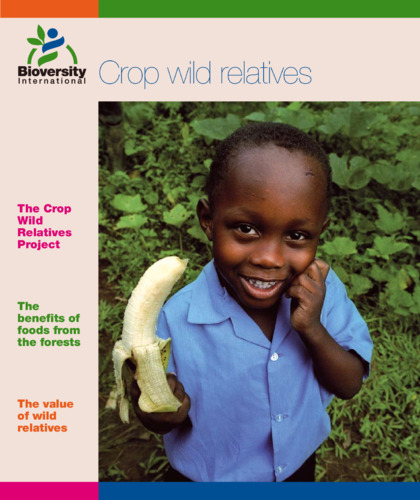Crop wild relatives: Reprinted from Geneflow 2006
Crop wild relatives include crop ancestors as well as other species more or less closely related to crops. They are a critical source of genes for resistance to diseases, pests and stresses such as drought and extreme temperatures. The use of wild relatives has led to improved resistance to wheat curl mite, to late blight in potato and to grassy stunt disease in rice. They have been used to improve tolerance of drought in wheat and acid sulphate soils in rice. Wild relatives have also been used to raise the nutritional value of some crops, including protein content in durum wheat, calcium content in potatoes and provitamin A in tomato. Protecting crop wild relatives helps to ensure that adequate genetic diversity exists in a particular crop's gene pool. The increasing genetic uniformity of crop varieties, combined with the effects of climate change, makes crops more vulnerable to stress. The devastating losses in the American maize crop caused by the Southern corn blight outbreak in the USA in the 1970s highlighted the real risk of relying on a few highyielding varieties. While the USA produces about half of the world's maize, production is based on less than 5% of the diversity available worldwide. Crop wild relatives are valuable tools that we can use to adapt to changing environmental conditions and human needs, but natural populations of wild relatives are increasingly at risk, due to over-exploitation and the loss of habitat. A global project, launched in 2004, addresses these risks. The project, funded by the Global Environment Facility and implemented by the United Nations Environment Programme, involves partners from five countries ”Armenia, Bolivia, Madagascar, Sri Lanka and Uzbekistan” with significant, important and threatened crop wild relatives. For more information about the project, see the story on p. 2. This special section of Geneflow 2006 is sponsored by the Crop Wild Relatives Project as part of its awareness-raising activities. As understanding and knowledge of crop wild relatives increases, plant breeders will increasingly look to them for solutions to many of the world's unsolved plant disease problems. One such major threat is Ug99, a black-stem rust first found in Ugandan wheat in 1999. This pathogen has been appearing in fields throughout East Africa ever since, where it is reducing grain yields by up to 71%. If not conquered soon, Ug99 could become a global epidemic within the next 15 years. The conservation and use of crop wild relatives could hold the key to meeting the challenge of Ug99 and other threats to agriculture and food security. Click here for more information on Crop Wild Relatives

